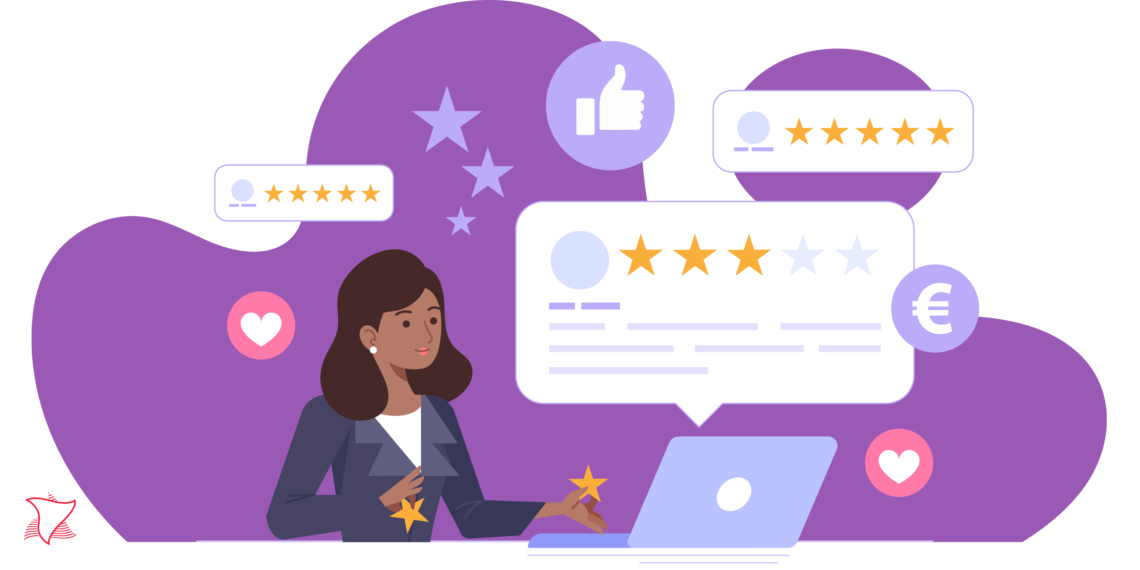It is common to hear that the cost of acquiring a new customer is higher than retaining an existing one. It is also widespread that the Customer Acquisition Cost (CAC) can be up to 5 times higher than the amount spent on keeping an existing customer. That’s why I’m focusing on customer loyalty for this content.
Despite holding some true, as Blake Morgan’s Forbes article calls out, companies focusing only on the CAC might be losing their focus on what really matters. For instance, connecting with customers and delivering actual value to them throughout the customers’ lifecycle. Taking this idea into consideration, companies should not ignore the costs associated with acquiring or retaining a customer. But they should keep in mind the value of each of their customers in the future, focusing on those that have the highest Customer Lifetime Value (CLV).
There are several strategies companies can adopt to increase retention and improve the loyalty of their customers, all of them proven in real-life scenarios. I summarized some of these examples for you. Here’s the table of contents for this article:
- Track and analyse your customer base churn metrics
- Identify your most profitable customers, by measuring Customer Lifetime Value (CLV)
- Set clear customer expectations, that you can deliver
- Run Customer Satisfaction Surveys
- Learn from your customers’ feedbacks
- Effectively address your customers’ complains
- Build relationships based on trust
1. Track and analyse your customer base churn metrics
There’s an old saying that states “you can’t fix what you don’t understand”. This is especially true when we look into customers that decide to do business with your competitors.
It is important to monitor your Customer Retention Rate (CRR). But it is even more relevant to pay attention to the customers that stop doing business with you and churn to a competitor. When this happens, it is wise to analyse the reasons for this and assess if there was anything you could have done to avoid it.
The formula used to calculate the Customers’ Retention Rate (CRR) is, as follows:
- A – # Customers at the start of the month
- B – # Customers at end of month
- C – # Customers acquired this month
CRR = (B-C) / A
As an example, if we put some numbers against each of the formula entries above, we end up with the following CRR result:
- A – # Customers at start of month = 1112
- B – # Customers at end of month = 1324
- C – # Customers acquired this month = 253
CRR = (1324 – 253) / 1112 = 1071 / 1112 = 0,963 (96,3%)
In the example above we see that 41 customers churned during the analysis period. As mentioned above, we should analyse each of those 41 customers and assess why have they churned.
2. Identify your most profitable customers, by measuring Customer Lifetime Value (CLV)
Customer Lifetime Value (CLV) is a key performance indicator (KPI) that presents you the predicted amount a customer will spend on your product or service throughout the entire relationship.
Calculating the CLV is a very challenging task. It depends on the estimation of future events and parameters that are difficult to predict, such as how long a customer will continue engagement with the company, or even how much the customer will spend during the engagement period.
A traditional formula to calculate the Customer Lifetime Value (CLV) is represented underneath. There are other formulas used to calculate CLV tough, and companies use, sometimes, more than one of these methods to calculate the CLV of their customers.
- A – Avg. Gross Margin per Customer Lifespan
- B – Customer Retention Rate
- C – Discount Rate
After calculating the CLV for each of your customers, you should pay special attention to those that have a higher CLV value, not only because they will bring the highest revenue to your business and will churn the least, but also because customers with a higher CLV are also the ones that, typically, will refer you to other potential customers.
3. Set clear customer expectations, that you can deliver
Setting clear customer expectations give your customers something to look forward to. This is a great way to build trust with your customers and retain them for the long term, as long you can deliver what you promise.
When companies are not able to meet their customers’ expectations this generates disappointment, which easily leads to conflict situations, hence the need for companies to define the expectations their clients should look up to, that can be met and clearly communicated.
If you set your customer’s expectations upfront, this defines the ground rules for the future interactions with your customers and eliminates the risks of your customers creating their own assumptions, e.g. expecting a response to an email in a couple of hours when your company usually takes up to 48 hours to reply to received emails.
It is important to set customer expectations where it matters the most. Some examples you should take into consideration when setting expectations:
- Communicate expected response times, across all your channels, so customers know when to expect a reply
- Define Chat availability, to let your customers know when you are online
- Identify the bots you use, so customers know how to communicate with you
- Make your customer aware of the communication channels available for them to reach out
4. Run Customer Satisfaction Surveys
Customer Satisfaction Surveys are vital for your business as they allow you to measure how satisfied your customers are with your company and to track your customer base loyalty and retention potential.
The feedback gained via Customer Satisfaction Surveys, assuming the obtained responses are completely honest, allows you to make data-driven decisions on the strategies to adopt regarding your business, service/products and operations.
Depending on how you build your Customer Satisfaction Surveys these can help you gather great qualitative feedback from your customers, which is very good for understanding why the respondent feels a certain way and how they would like you to improve the way you do business with them. Customer Satisfaction Surveys are also great because they allow collecting comprehensive and, if well planned, accurate data, when compared with the analysis of behavioural data, that you can more promptly use.
When running Customer Satisfaction Surveys, you should bear in mind however that the obtained results reflect the feedback of the users that actually answered the survey and not the overall population you work with (sampled data), this question might surface even more when you run frequent surveys, leading to survey fatigue and as a result of a reduction on the number of responses, in addition, the fact that some respondents might not be 100% honest with their answers, leading to biased results, is something you should look after when interpreting the responses.
5. Learn from your customers’ feedbacks
Your customers’ loyalty is the source of revenue for your business and listening to what they have to say about your company, your products and/or your service can be the difference between them making business with you or choosing one of your competitors instead.
When you get to know your customers you can adjust the way you approach and communicate with them, to be more aligned with the way how they like to work and, by doing this, increase the likelihood of establishing a mutually beneficial relationship.
When you take time to listen to what your customers have to share, you increase the probability of understanding what they want/need, how your offering can fulfill their needs and how best to approach them to establish a trustful and positive relationship and, ultimately, gain their confidence to do business with you.
6. Effectively address your customers’ complains
Despite not being desirable, complaints can be used as a source of valuable information about your business and your customer base. When a customer bothers to interact with you, even if it is to complain about a product and/or service of yours, it is likely to remain loyal to your business if you manage to properly manage its complaint.
Customers who receive an efficient, professional and adequate response to their complaints tend to establish an affinity with the company they interacted with and more likely remain loyal to it, based on the attention their complaints received.
When dealing with a customer’s complaint you should consider the following:
- You should give a sense of urgency to the complaint, as your customers want to feel their concerns are taken seriously.
- In face-to-face or phone conversations, you should allow the customer to explain its problems
- You should record all the details of the customer’s complaint, as all the raised concerns should be addressed and clarified
- Assess all raised concerns and respond to your customer. Responding to your customer means you took time to listen to what he/she had to share with you.
- Review your processes to ensure you avoid similar situations happening again
7. Build relationships based on trust
If you want your company to succeed, you must foster a trustworthy relationship between your company and its customers to generate customer loyalty. Trust is essential to ensure the relationship you build with your customers is based on honesty and mutual respect and you should consider the following tips as inputs on how to build strong and trustful relationships:
- Take time to create the relationship. Trust requires time, truth and transparency to be built.
- Take a long-term view of your customer’s needs instead of focusing on maximizing your sales for a particular fiscal quarter or year.
- Put yourself in the customers’ shoes… this is a good way for you to assess if the business relationship needs changing.
- Communicate frequently and openly, sharing your views and listening to your customers’ ones. Free flowing communication makes your customers feel valued and they will reward you with their confidence and, eventually, loyalty.
- Make your customers feel that you hear, respect and understand them.
- Take time to understand your customers’ objectives and offer your support to address them
I hope you enjoyed reading this article as much as I enjoyed sharing my experience! Feel free to contact us if you any question regarding this content or other in our Knowledge Center.
SUBSCRIBE KNOWLEDGE CENTER
Subscribe for free to our Knowledge Center to get the latest articles straight to your inbox!







